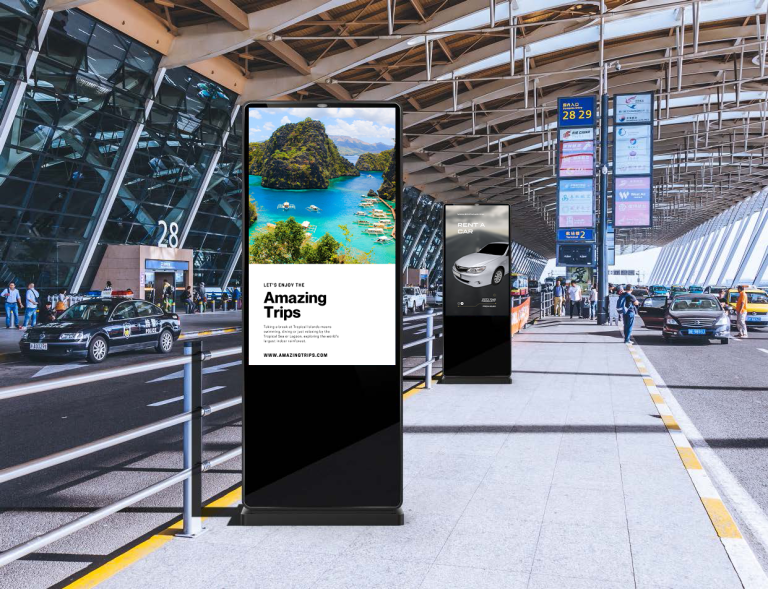In today’s fast-paced world, outdoor digital signage displays have become a game-changer for businesses and organizations looking to capture attention and convey messages effectively. From advertising and information dissemination to interactive experiences, these versatile screens offer a plethora of applications. This article delves into the key aspects of outdoor digital signage displays, exploring their benefits, technology, and best practices for implementation.
What is Outdoor Digital Signage?
Outdoor digital signage displays are electronic screens designed to be used in outdoor environments. Unlike traditional billboards or static signs, these displays can show dynamic content such as videos, advertisements, and real-time updates. They are equipped to withstand various weather conditions, making them ideal for high-traffic areas like shopping centers, transportation hubs, and city streets.
Key Benefits of Outdoor Digital Signage Displays
1. Enhanced Visibility and Engagement
Outdoor digital signage displays capture attention with vibrant colors and dynamic content. Their ability to display high-resolution graphics and videos ensures that messages stand out even in bright sunlight. This visual appeal increases engagement and helps in effectively communicating with passersby.
2. Flexibility and Real-Time Updates
One of the standout features of outdoor digital signage is the ability to update content in real-time. This flexibility allows businesses to change promotions, display live news feeds, or respond to current events instantly. It’s particularly useful for advertising campaigns that need to adapt to changing conditions or market trends.
3. Cost-Effective Advertising
While the initial investment in outdoor digital signage displays can be significant, the long-term benefits outweigh the costs. Digital signage eliminates the need for printed materials and the associated costs of production and distribution. Additionally, digital content can be repurposed and reused across multiple campaigns.
4. Interactive Capabilities
Modern outdoor digital signage displays often come with interactive features such as touchscreens or integration with mobile apps. These capabilities enhance user experience by allowing viewers to interact with the content, participate in surveys, or find information relevant to their interests.
Key Technologies Behind Outdoor Digital Signage Displays
1. Display Panels
Outdoor digital signage displays use LED or LCD panels designed for high brightness and outdoor visibility. LED panels are particularly popular due to their superior brightness and energy efficiency, making them ideal for direct sunlight exposure.
2. Weatherproofing
To ensure durability, outdoor digital signage displays are built with weatherproof casings that protect against elements like rain, dust, and extreme temperatures. This weatherproofing is crucial for maintaining display performance and longevity.
3. Connectivity
Advanced outdoor digital signage systems come with various connectivity options including Wi-Fi, 4G/5G, and Ethernet. These options facilitate easy content updates and remote management of the displays.
4. Content Management Systems (CMS)
A robust CMS is essential for managing and scheduling content on outdoor digital signage displays. It allows users to create, organize, and deploy content efficiently, ensuring that the right message reaches the audience at the right time.
Best Practices for Implementing Outdoor Digital Signage Displays
1. Location and Placement
Choosing the right location for your outdoor digital signage display is critical. High-traffic areas with maximum visibility are ideal. Consider factors such as sightlines, mounting height, and proximity to potential viewers to optimize impact.
2. Content Strategy
Develop a content strategy that aligns with your objectives and audience preferences. Content should be engaging, relevant, and easy to digest. Incorporate a mix of media types such as videos, images, and text to keep viewers interested.
3. Maintenance and Support
Regular maintenance is essential to ensure the longevity and performance of outdoor digital signage displays. Establish a routine for cleaning the screens, checking connections, and updating software. Consider partnering with a reliable service provider for ongoing support.
4. Compliance and Regulations
Adhere to local regulations and zoning laws regarding outdoor signage. This includes obtaining necessary permits and ensuring that your display meets safety and environmental standards.
Conclusion
Outdoor digital signage displays are revolutionizing the way businesses and organizations communicate with their audiences. By leveraging advanced technologies and following best practices, you can maximize the impact of your digital signage and achieve your communication goals. As technology continues to evolve, outdoor digital signage will likely become an even more integral part of our visual landscape, offering endless possibilities for engagement and interaction.





